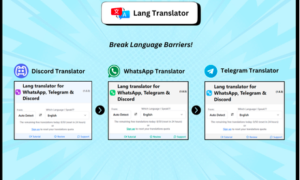In the ever-evolving landscape of digital marketing, businesses are constantly on the lookout for innovative ways to reach their audiences. Among these new approaches, **WhatsApp Marketing** has emerged as a potent and effective tool. But how does it stack up against traditional marketing channels? Let’s dive into this comparative analysis to determine which yields better results.
Traditional Marketing Channels
Traditional marketing refers to any type of promotion, advertising or campaign that has been in use by companies for years, and has a proven success rate. It includes print advertisements, billboards, flyers, radio, and TV commercials, to name a few. These strategies have been time-tested and continue to deliver consistent results for many businesses. However, they often involve considerable expenses and reaching a highly specific audience can be challenging.
Furthermore, unlike the immediate and dynamic nature of digital channels, traditional marketing involves a slower feedback loop. Businesses might have to wait days, weeks, or even months to evaluate the effectiveness of their campaigns.
The Rise of WhatsApp Marketing
As a contrast to the conventional channels, WhatsApp, a free messaging app, has been turning heads in the marketing world. With over 2 billion active users worldwide, WhatsApp Marketing offers a unique platform to reach and engage with a vast global audience.
WhatsApp allows businesses to interact with their customers on a platform they use daily. This personal and direct communication builds trust and fosters relationships, resulting in higher conversion rates. Businesses can send product updates, promotional messages, and customer service communications quickly and efficiently.
Moreover, WhatsApp provides immediate feedback and measurable results. Businesses can track message delivery and read receipts, providing insights into customer engagement levels.
Slack: A Unique Case Study
Slack, the popular team collaboration tool, serves as a powerful example of the impact of a robust digital marketing strategy. Unlike traditional strategies, Slack’s approach transcends simply attracting customers; it revolves around building and nurturing a community.
A crucial element of the Slack marketing strategy is its clever use of social media. Slack maintains a strong and engaging presence across various social platforms, effectively humanizing their brand and fostering a sense of connectivity.
For instance, Slack doesn’t merely use Twitter for product updates or service announcements. Instead, they engage in genuine conversations with their followers, discuss industry trends, share insightful articles, and even post humor-infused content. This approach has not only increased their followers but also led to high engagement rates.
Furthermore, Slack has successfully capitalized on content marketing. They’ve developed a multi-faceted content strategy, including informative blog posts, compelling case studies, and webinars featuring industry leaders. One noteworthy example is the Slack Variety Pack, a podcast series that offered a unique blend of storytelling, advice, and insights about work and team collaboration.
Notably, Slack’s unconventional launch strategy played a pivotal role in its early success. Rather than splurging on expensive advertising, they relied heavily on word-of-mouth and organic growth. They offered their product to other startups for free, and as these organizations grew, so did Slack’s user base. According to a report, by 2015, about 60% of Slack’s active user base was attributable to organic and viral growth.
The success of Slack’s marketing strategy is evident in its numbers. As of 2021, Slack boasts over 12 million daily active users, and it’s being used by over 750,000 companies worldwide.
Slack’s marketing success story demonstrates the potential power of digital communication tools when leveraged effectively. They’ve managed to build an engaged community around their brand, using digital platforms to maintain a consistent, approachable, and human-centric brand voice.
The Verdict
So, which is better: WhatsApp or traditional marketing channels? The answer isn’t straightforward and depends on your business’s specific needs and objectives.
Traditional marketing channels offer broader reach and a sense of familiarity and trust with audiences, but they can be expensive and lack the targeting precision of digital platforms.
On the other hand, WhatsApp marketing offers the advantage of personalized and immediate communication, fostering a stronger connection with the customer.
In conclusion, businesses would do well to integrate both approaches into their marketing strategies. Combining the extensive reach of traditional marketing with the precision and personalization of tools like WhatsApp can help businesses maximize their marketing ROI and connect more effectively with their customers.



































